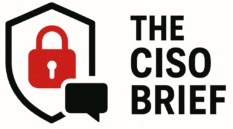Quick Takeaways
-
Innovative Attack Tools: The Fog ransomware attack in May 2025 uniquely utilized legitimate tools like Syteca (employee monitoring software) and open-source pentesting utilities (GC2, Adaptix, Stowaway), marking a departure from typical ransomware methodologies.
-
Extended Network Compromise: Attackers breached the financial institution’s network two weeks prior to the ransomware deployment, exploiting the open-source tools to compromise Exchange servers and establish a foothold using utilities like Syteca and GC2 for exfiltration and lateral movement.
-
Espionage Motives: Symantec suggests that the unusual mix of tools and tactics indicates the primary goal may have been espionage rather than pure financial gain, with the ransomware component possibly serving as a decoy or secondary revenue stream.
- Historical Context: This attack aligns with past incidents involving tools associated with Chinese state-sponsored hacking, highlighting a pattern of using legitimate software in cybercrime while the Fog ransomware itself previously targeted the U.S. education sector.
Problem Explained
In May 2025, a sophisticated Fog ransomware attack targeted a financial institution in Asia, leveraging an unusual arsenal of legitimate tools typically associated with employee monitoring and penetration testing. According to a report by Symantec, the attackers initially compromised the organization’s network two weeks prior to the ransomware deployment, successfully infecting two Exchange servers. The breach began with the utilization of open-source tools like GC2, known for its capability to exfiltrate data via Google Drive or Microsoft SharePoint, and accompanied by Syteca—an employee monitoring application—along with Stowaway, a proxy utility. These tools were likely employed for espionage, taking advantage of their abilities for information gathering, such as keystroke logging and screen capturing, suggestive of a deeper motive beyond mere financial gain.
Symantec’s findings indicate a pattern consistent with prior ransomware tactics, particularly those employed by China-linked advanced persistent threat (APT) groups. The Fog attackers not only sought financial reward through ransomware but also aimed to maintain long-term access to the victim’s network, establishing persistence through various command-and-control mechanisms and employing utilities like Freefilesync for data exfiltration. The unique blend of conventional ransomware approaches with espionage tactics underlines a worrying trend in cyber threats, where the lines between financial and intelligence motivations increasingly blur.
Risk Summary
The recent Fog ransomware attack highlights a multifaceted threat that extends beyond the immediate financial institution in Asia, posing considerable risks to other businesses, users, and organizations that may also be unwittingly affected. By leveraging legitimate tools such as Syteca, an employee monitoring software, and an array of open-source pentesting utilities, the attackers not only executed a sophisticated infiltration strategy but also raised concerns about the potential normalization of such tactics in cybercriminal operations. The innovative use of tools previously associated with state-sponsored espionage significantly complicates the threat landscape, as these methodologies could embolden other malicious actors to adopt similar strategies, leading to a cascading effect of trust erosion and heightened vulnerability across industries. With the operational capabilities to execute lateral movements within compromised networks, exfiltrate sensitive data, and maintain persistent access, organizations could face insurmountable challenges if targeted by subsets of the same attack vector, potentially resulting in financial losses, reputational damage, and legal repercussions stemming from data breaches. Thus, the ramifications extend far beyond the initially targeted entity, underscoring the urgent necessity for comprehensive threat assessments and fortified cybersecurity measures across all sectors.
Possible Actions
The escalating threat posed by sophisticated ransomware variants, such as Fog, necessitates immediate and effective remediation.
Mitigation Steps
- Incident Response Plan: Activate a well-defined strategy.
- Threat Intelligence: Stay updated on emerging threats specific to Fog ransomware.
- Network Segmentation: Limit data access to impede lateral movement.
- User Education: Train employees to recognize phishing attempts that often precede attacks.
- Backup Restoration: Regularly test and prepare offline backups for rapid recovery.
- Endpoint Detection: Implement advanced threat detection tools to identify unusual activity promptly.
- Vulnerability Management: Conduct regular assessments to patch exploitable weaknesses.
NIST CSF Guidance
The NIST Cybersecurity Framework emphasizes a structured approach to mitigate risks, including preparation, detection, and response. Referring to NIST Special Publication 800-61, "Computer Security Incident Handling Guide," can provide a comprehensive framework for addressing incidents like fog ransomware attacks.
Explore More Security Insights
Explore career growth and education via Careers & Learning, or dive into Compliance essentials.
Understand foundational security frameworks via NIST CSF on Wikipedia.
Disclaimer: The information provided may not always be accurate or up to date. Please do your own research, as the cybersecurity landscape evolves rapidly. Intended for secondary references purposes only.
Cyberattacks-V1
